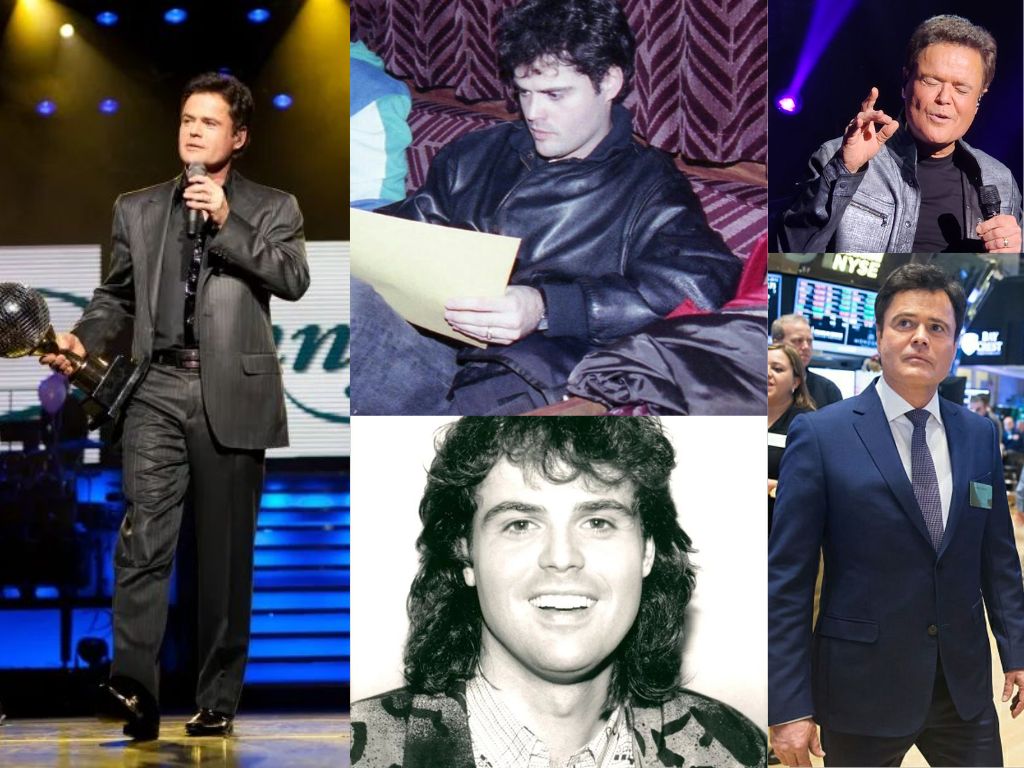
Deep Purple: A Young Heart’s Plea Amidst Lavender Hues
Ah, Donny Osmond and “Deep Purple.” For many of us who lived through the vibrant, often tumultuous 1970s, those names conjure up a very specific image: clean-cut innocence, family-friendly entertainment, and a voice that, even in its youth, possessed a certain earnest charm. This particular rendition of “Deep Purple” arrived in 1975, finding its home on the album “Donny & Marie: Featuring Songs from Their Television Show”. It was a testament to the colossal popularity of the Osmond siblings’ variety show, which brought their wholesome brand of music into living rooms across America.
“Deep Purple” itself isn’t an original Osmond composition. It’s a venerable standard, first conceived as an instrumental piece in 1933 by Peter DeRose, with lyrics later added by Mitchell Parish. Over the decades, it had been interpreted by a myriad of artists, each leaving their own unique imprint on its melancholy beauty. But when Donny Osmond, then a teen idol navigating the choppy waters of adolescence and soaring fame, took on “Deep Purple,” he infused it with a tender vulnerability that resonated deeply with his youthful fanbase and, perhaps surprisingly, with an older generation that remembered the song’s earlier iterations.
Upon its release as a single, Donny Osmond‘s “Deep Purple” gracefully ascended the charts. It peaked at No. 14 on the Billboard Hot 100 in the United States, a respectable showing that further cemented his solo appeal beyond the Osmond family brand. It also performed well internationally, reaching No. 25 in the UK and No. 15 in Canada, showcasing the global reach of the Osmond phenomenon. These were the days when a song’s journey up the charts was a much-anticipated event, discussed around water coolers and on school playgrounds. There was a genuine excitement in following a song’s trajectory, week by week, as it climbed or descended, reflecting the public’s fickle affections.
The story behind Donny‘s take on “Deep Purple” is, in many ways, tied to the very essence of his public persona. He was the wholesome boy next door, the idol whose sincerity was almost disarming. In an era often defined by rock’s rebellion and disco’s hedonism, Donny Osmond offered a comforting, sentimental counterpoint. “Deep Purple” perfectly fit this mold. The lyrics speak of a lingering memory of a lost love, evoked by the ethereal twilight hours: “When the deep purple falls over sleepy garden walls, and the stars begin to twinkle in the sky, in the mist of a memory, you wander back to me, breathing my name with a sigh.” It’s a sentiment steeped in a gentle melancholy, a quiet yearning for what was, or perhaps, what could have been.
For those of us who remember those days, the song evokes a simpler time. It was a soundtrack to first crushes, to quiet evenings spent dreaming, to the bittersweet ache of young love and nascent heartbreak. Donny‘s voice, still carrying the softness of youth, delivered these mature sentiments with an almost poignant innocence. He wasn’t a world-weary crooner, but a young man grappling with emotions that felt grand and overwhelming. The “deep purple” isn’t just a color; it’s a metaphor for that fleeting, wistful moment between day and night, where memories often come alive with startling clarity. It’s the emotional twilight zone where past loves revisit our thoughts, bathed in a soft, nostalgic glow.
Listening to it now, decades later, “Deep Purple” brings forth a wave of nostalgia. It’s not just the melody or Donny‘s voice; it’s the memory of a time when music on the radio felt like a shared experience, when “Donny & Marie” was a staple of Friday night television, and when the anxieties of the world seemed a little less pressing, perhaps because we were younger and more shielded. The song is a gentle reminder that even amidst the dazzling lights of stardom and the relentless churn of the entertainment industry, there were moments of quiet, heartfelt expression. It’s a testament to the enduring power of a classic melody, and the ability of a young, earnest voice to breathe new life into it, forever imprinting it on the collective memory of a generation. It truly is a journey back to the deep purple dreams of our own pasts.